Spiraea care and growing guide: expert tips for success
Learn how to grow spiraea and enjoy the bright flowers and attractive foliage of these easy-care shrubs in spring and summer

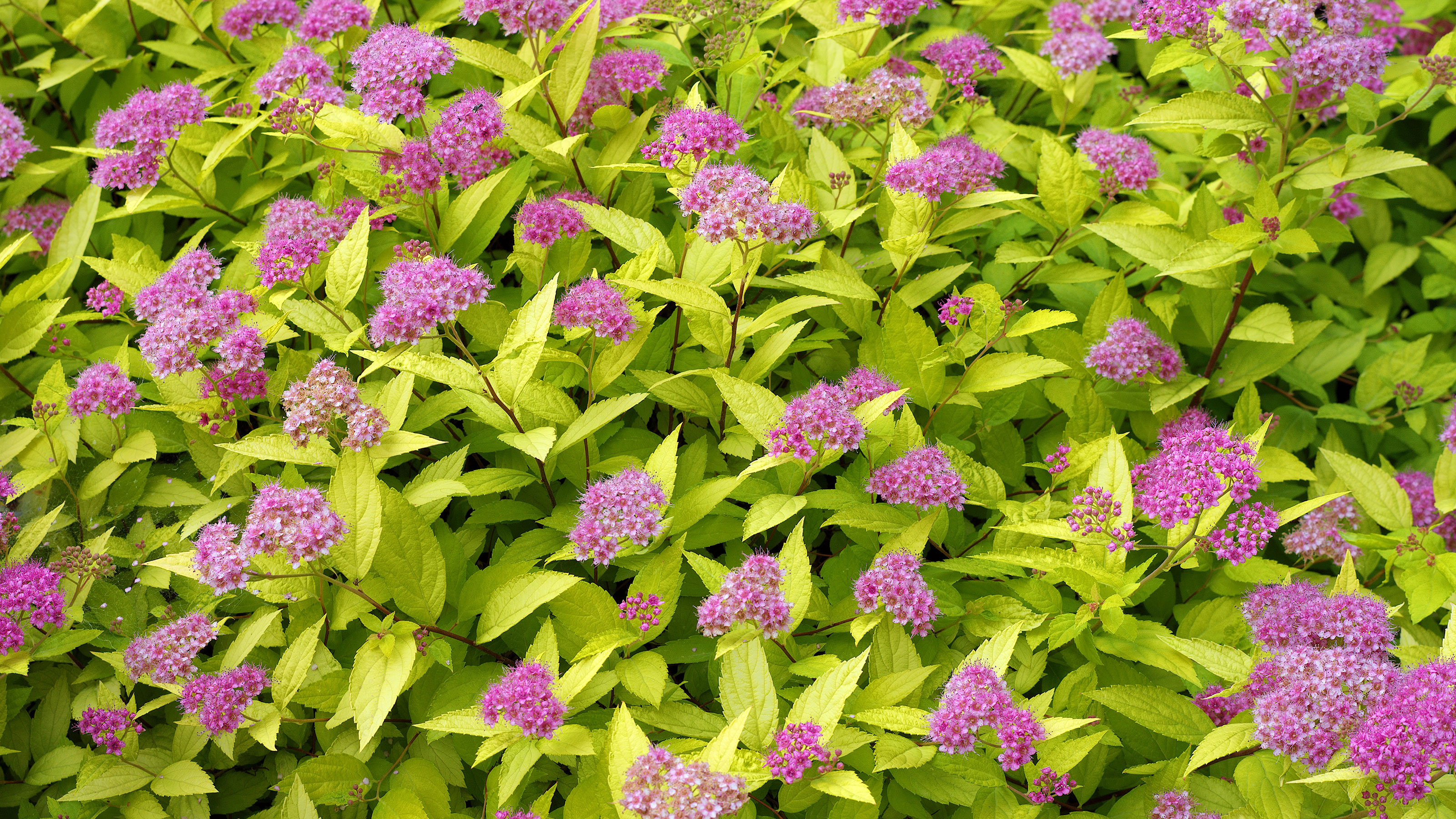
Spiraeas are tough, deciduous shrubs, often rather elegant in their growth, flowering in spring or summer, that are grown for their colorful foliage, their attractive heads of tiny flowers or both.
Long-lived, and well-behaved, adaptable and tolerant, the flowers of spring varieties are usually white, often a very clean and bright white, presented in flat heads or they may come in pink cylindrical spikes. The flowers of summer varieties are mostly pink or reddish purple and gathered into broad flat heads.
Spiraeas are unusually cold hardy and are adaptable plants, happy in most soils in full sun, although some grow less well in chalky conditions. They are one of the best low-maintenance shrubs, although it's worth noting that they have a preference for their roots not drying out too much in summer.
Spiraeas are easily pruned – although some rarely need pruning at all – and are generally very easy to propagate.
There are varieties suited to permanent planting in containers, or for planting towards the front of mixed borders, or as specimen plants in a mixed border or even as constituents of an ornamental hedge. Many summer-flowering varieties have foliage in ruby or golden tones which create interest from when the buds first open in spring.
The experts at Trees And Shrubs Online tell us: 'As ornaments in the garden, the best of the spiraeas fill an important place. They flower with great freedom, are often very graceful, and they are perfectly at home under cultivation. All like a good loamy soil, abundant moisture, and full sunlight.'
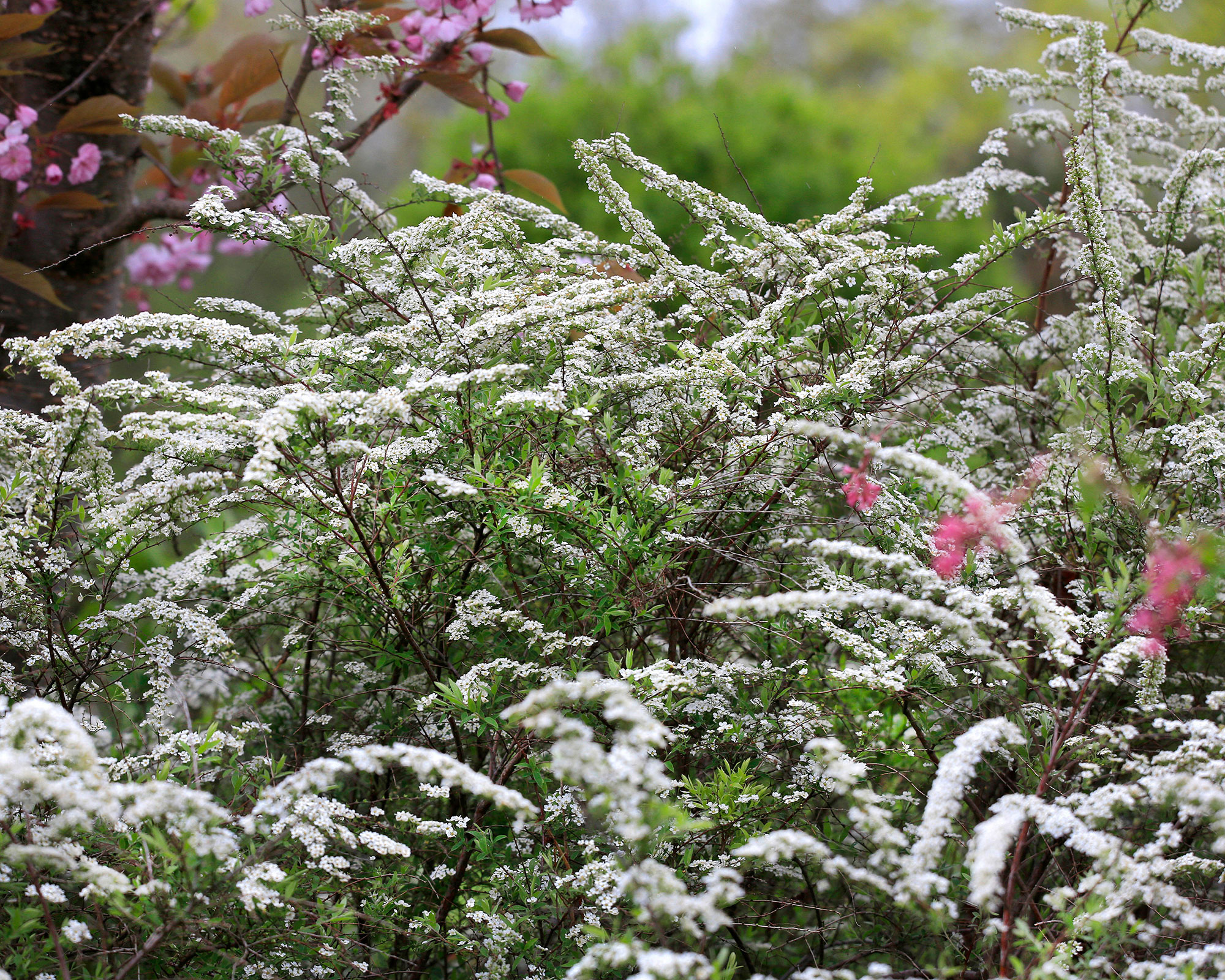
Spiraea japonica: key facts
- Plant type: Deciduous shrub
- Mature size: 3-8ft (90cm-2.5m)
- Soil type: Any fertile soil that is not parched or waterlogged
- Soil PH: Slightly acid, neutral, slightly alkaline
- Time of year to plant: Any time when conditions allow
- Flowering time of year: Spring, summer
- Flower color: White, pink, red-purple shades
- Hardiness zones: USDA Z3-4 (RHS H6)
- Scientific name: Spiraea
- Common name: Bridal wreath, Japanese spiraea
The different types of spiraea
Spiraeas can conveniently be gathered into three main groups.
Spring-flowering spiraeas are often elegantly arching in growth and have small, neat leaves that sometimes color well in fall.
Their small white flowers are gathered into flat heads that open at the leaf joints all along the branches.
For a few spring weeks the spectacle can be glorious. ‘Arguta’ is a popular variety of this type.
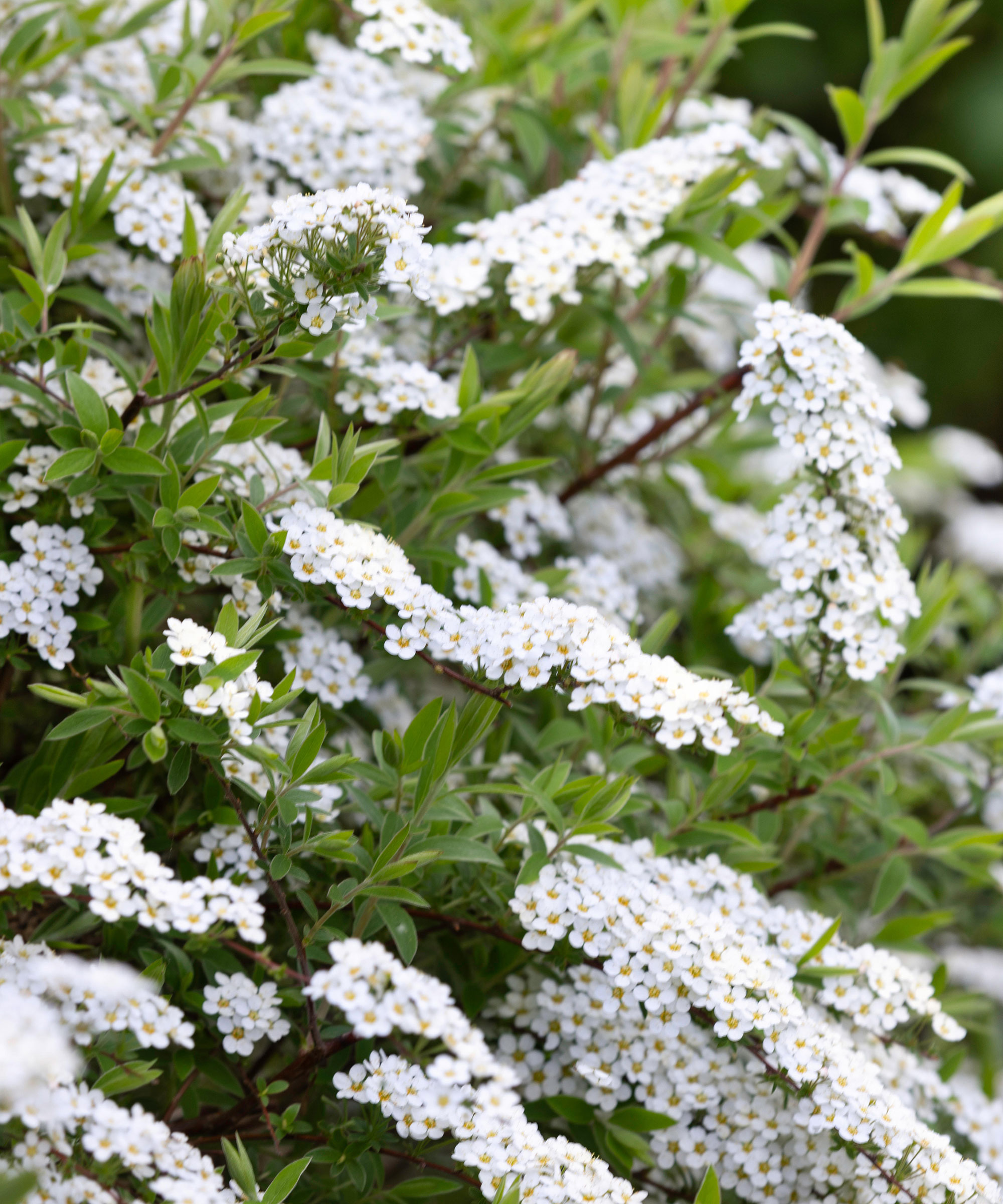
There is also a second group of spring flowering spiraeas and in this case the flowers are pink and gathered into heads that are cylindrical or conical in shape.
This group has been fading in popularity in recent years, partly because growth can be too vigorous. Spiraea veitchii was once a favorite.
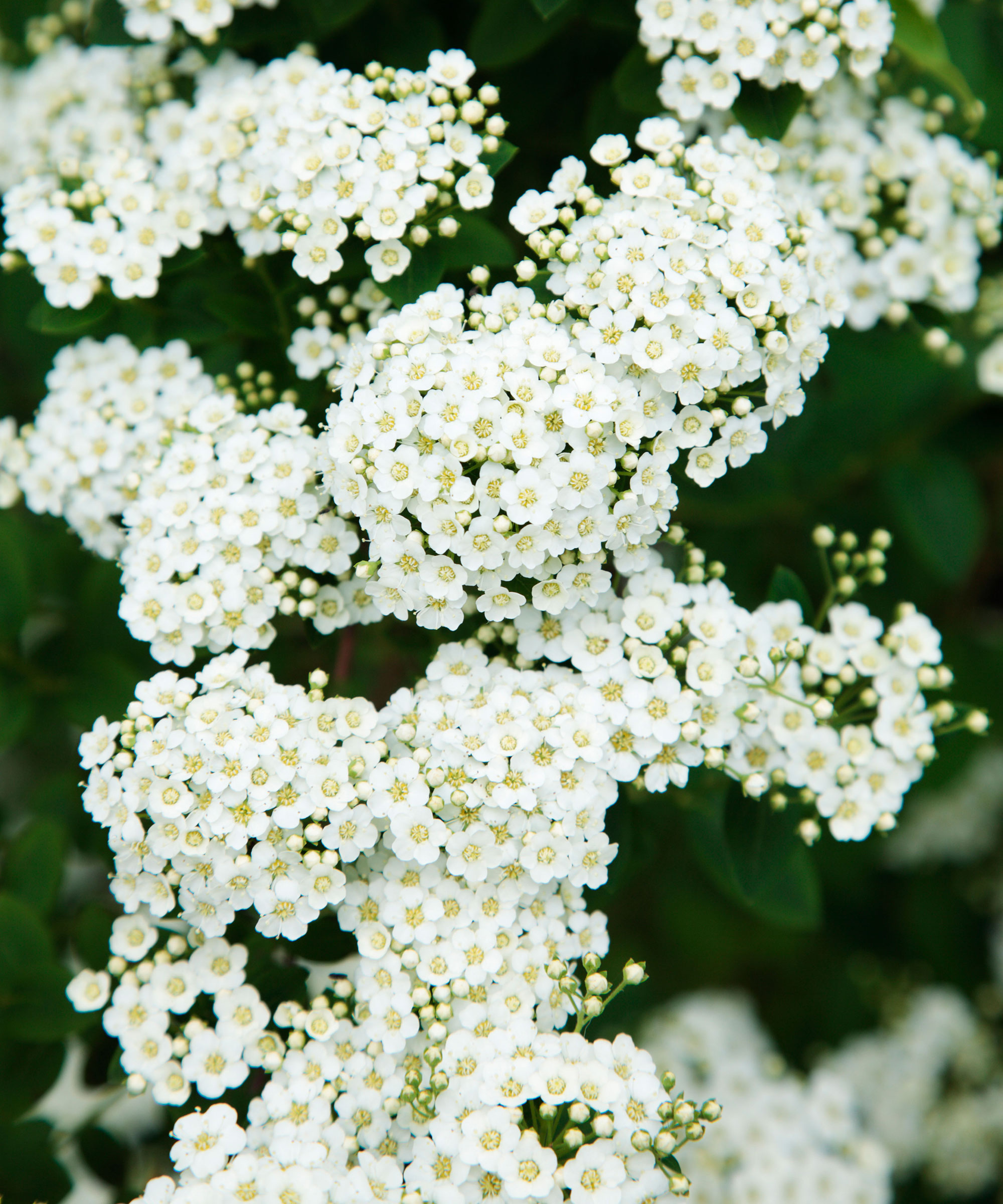
Summer-flowering spiraeas usually have slightly larger leaves and larger heads of pink or reddish flowers for a longer summer season.
Varieties in this group of summer-flowering shrubs are often grown as much for their foliage which can vary from crimson through a range of golden and amber shades. The new growth in the tips of the shoots is sometimes almost plum colored.
Look for the Double Play Series with flowers and foliage in a range of combinations.
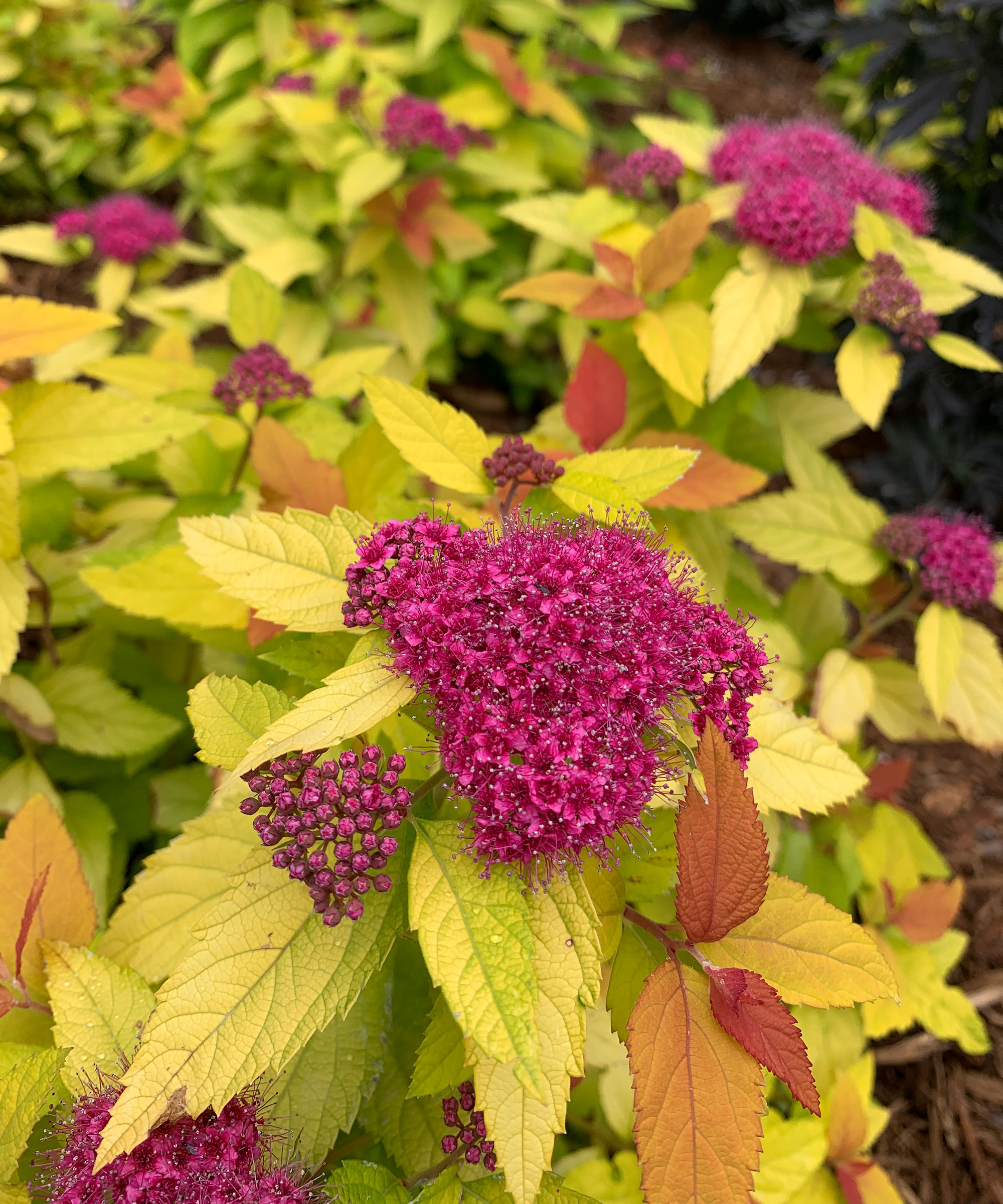
How to use spiraeas in your yard
Many of the summer-flowering varieties with good foliage can be used as low, informal hedges in the garden.
One of their delights is that the foliage often changes color, from deep red or bright red in the opening shoot tips to amber or gold in the mature leaves.
Varieties in this group can be cut back hard in spring, or cut back by half for a taller, more informal effect. The same varieties can be used as highlights in small mixed garden borders. Look out for ‘Goldflame’ or the Double Play Series.
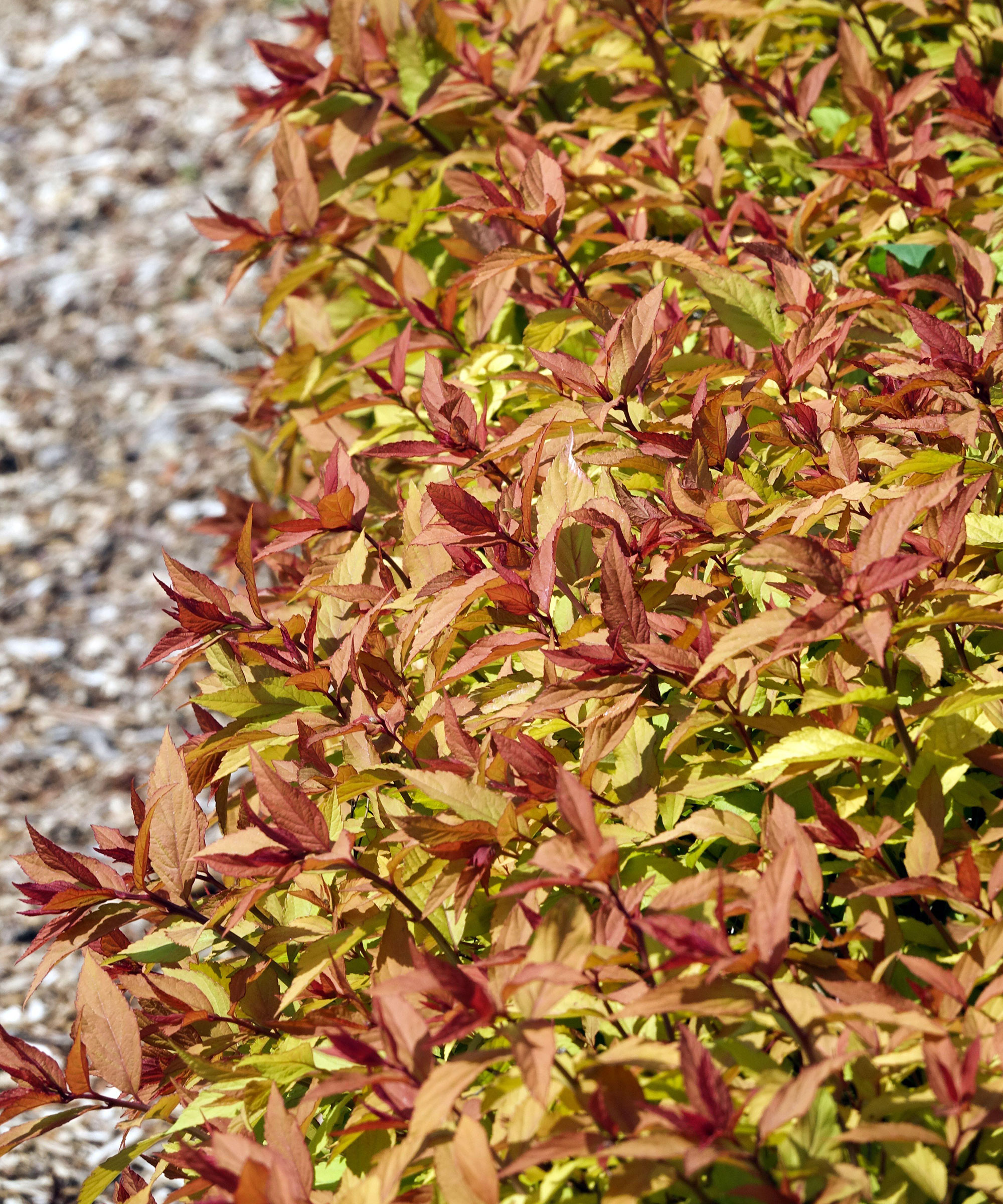
Spring-flowering, white-flowered varieties make elegant and impressive specimens although their flowering season is not as long as we would like.
Be sure not to hide their arching growth with other plants, except those that reach full height later in the season after the spiraea is over.
The same varieties can be used if you are thinking of breaking up your garden by landscaping with hedges and, either way, used as hosts for a late flowering clematis.
Try ‘Arguta’ or Spiraea thunbergii which come with the same general look.

Less robust varieties also make fine specimens for container gardening or if you are looking for shrubs for small gardens.
'Snowmound’ is a white-flowered, spring variety, but the foliage varieties of Spiraea japonica with their flat clusters of pink to cherry red flowers set above colorful foliage are the best bet.
Look too for Magic Carpet ('Walbuma') and the Double Play Series.

When, where and how to plant spiraea
Spiraeas are among the most winter hardy of shrubs, many will thrive in USDA Zone 3 and all will thrive anywhere in Britain.
They can be planted at almost any time that the ground is not waterlogged, frozen or parched, and when the plants are dormant or in growth or in flower.
Choose a site that receives at least six hours of sun each day and, first, soak the root ball in a bucket of water while you prepare the site.
Spiraeas need no special planting treatment although they appreciate thorough preparation so amend the soil with bagged planting mix or garden compost.
Irrigate well immediately after planting. Mulching with 2-3in (5-7.5cm) of bark chips or other weed free material will conserve soil moisture and prevent weed growth.
When adding them to garden planters, use fresh, moist, planting mix and stand the container on pot feet to lift the pot off the ground. This will ensure that surplus moisture can drain away quickly – if drainage is poor the roots will rot.
When first planted in a container, your spiraea will probably not fill the pot so plant annual flowers, such as blue lobelia perhaps, round the edge to hide the bare soil.

Spiraea care tips
The only regular care that your spiraea will need is annual pruning, annual feeding and watering of plants in dry seasons.
Spring-flowering varieties, such as ‘Arguta’, are best pruned by cutting out one or two old flowering shoots after flowering. The many varieties of Spiraea japonica, grown for their colorful foliage and summer flowers, can be cut almost to the ground in spring or, if you prefer a larger plant, cut back by about half. These are also best deadheaded after flowering and will often produce a haze of colorful new shoots.
Feed in spring with a shrub fertilizer such as Plant-tone (available on Amazon) or bonemeal (also available on Amazon) and again in fall if growth is poor. In hot, dry summers your spiraeas will appreciate irrigation, water thoroughly using a drip system – a thorough soak every two or three weeks is better than a light sprinkle with the garden hose every day.
How to make more spiraea plants
Most spiraeas are easy to propagate, and no special equipment or facilities are needed, as they have the very useful habit of spreading steadily at the root, developing short suckers.
They are never a nuisance, and never invasive, but in early spring pieces can be detached and planted in pots of fresh planting mix where they will soon develop roots and grow into plants that can be planted out or passed on to friends and family as free plants.
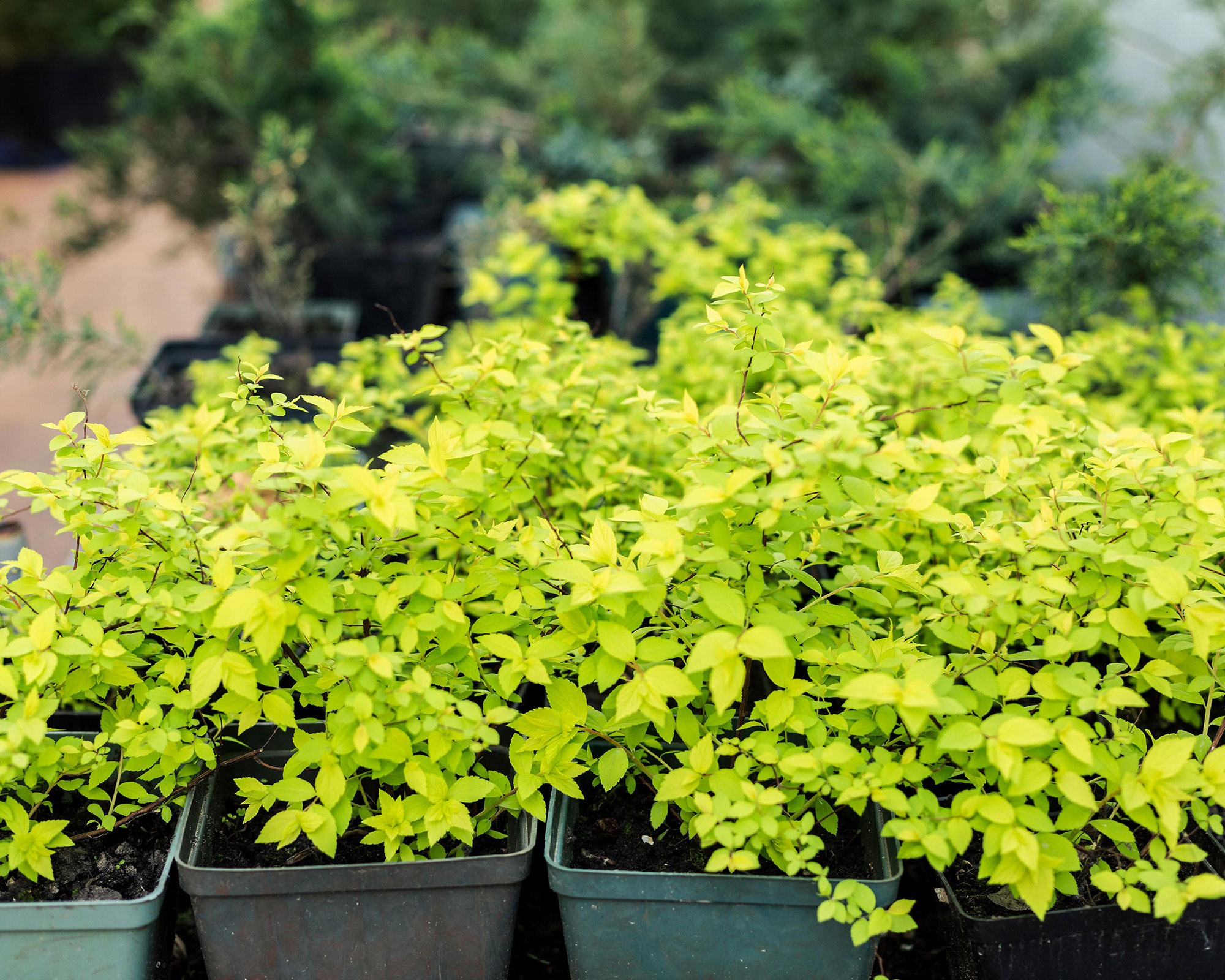
Spiraea problems and how to solve them
Spiraeas are generally trouble-free but there can sometimes be a problem with older summer-flowering varieties.
In some, the reddish flowerheads may develop in two different colors, one half darker than the other. The same thing can happen with the golden leaves where part of the leaf remains gold and part becomes green.
This instability is seen more often in older varieties, so simply snip out the rogue shoots with your best secateurs. If it bothers you, dig up and discard your plant and replace it with a modern variety from the Double Play Series as these are much more stable.
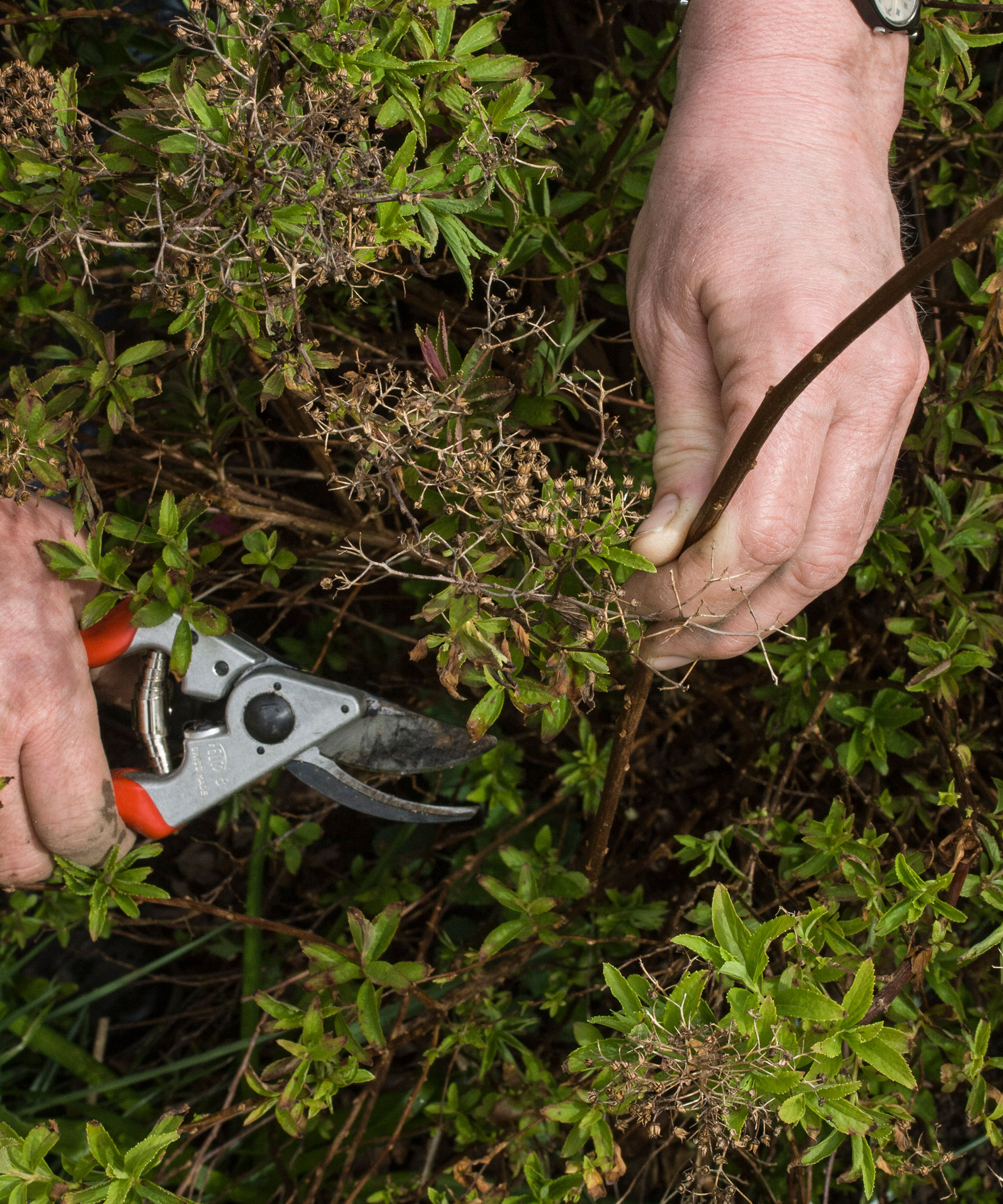
Do spiraeas need full sun?
Spiraeas are not a shade-loving plant, but the amount of sun they need depends on where they are grown. In northern areas of the US, all-day sun is ideal although they will usually also do well as long as the plants are in the sun for at least six hours a day. They are happier in shade from the side and dislike overhead shade.
Farther south in the US, spiraeas are less dependent on full sun but, again, they dislike overhead shade from taller shrubs or trees.
In the UK, sun for most of the day, or all day, suits spiraeas best, they are not happy in the shade of evergreen trees, deciduous trees or large shrubs.
A problem that sometimes occurs is that your spiraea is planted in full sun and does well for a few years. But during that time nearby shrubs that are more vigorous may grow larger than the spiraea or nearby trees may spread their branches. This can result in your spiraea becoming increasingly shaded and flowering less well. Some thoughtful pruning of the plant casting the shade will solve the problem.
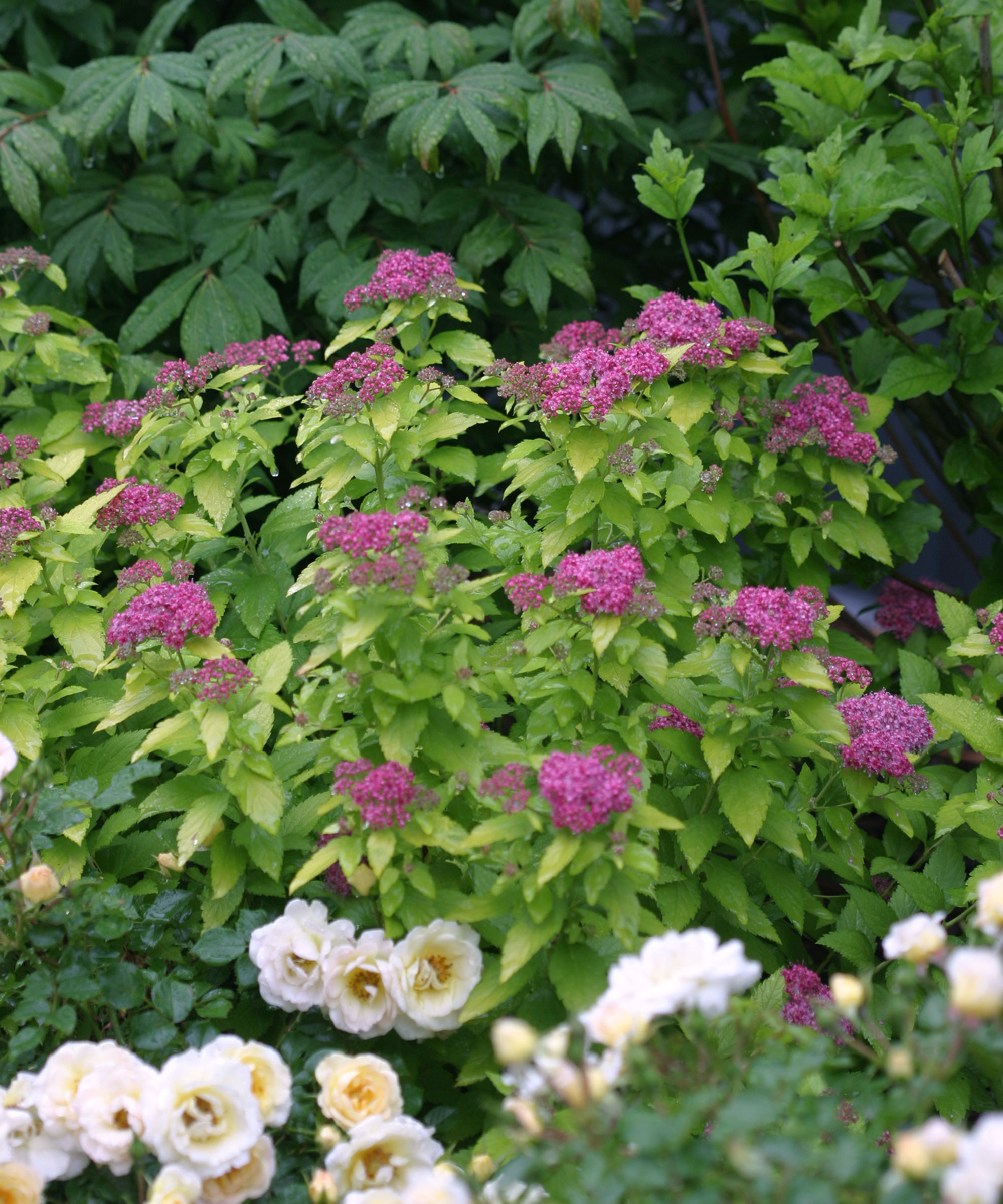
Are spiraeas deer resistant?
Spiraeas are not 100% guaranteed deer-resistant plants but the experts at the New Jersey Agricultural Experiment Station rate spiraeas as 'Seldom Severely Damaged'.
This means that deer prefer other plants but will feed on spiraea if there are few more palatable plants to eat.
Should spiraea be cut back every year?
Spring-flowering spiraeas can be left unpruned, or thinned out immediately after flowering. But summer-flowering varieties will produce a far better display of both flowers and foliage if they are cut back each spring.
Spring pruning encourages a vigorous flush of colorful new spring foliage and then, in summer, this is followed by much larger flowerheads than if you simply left the plant alone.
Some gardeners employ a halfway approach, cutting back in spring – but only to about half the height of the plant. This will encourage smaller heads of flowers but far more of them. This approach will also promote more dark shoot tips to contrast with the older foliage.

Where to buy spirea
Summer-flowering spiraeas with good foliage are offered in garden centers and other retail spaces from spring, when the colorful foliage emerges, through into summer when the flowers are at their peak.
There are also plenty of reputable internet retailers where you can buy plants online.
Source plants by mail order for planting in fall or early spring, and you can enjoy a full season of spring flowers or months of burning embers foliage and summer bloom. Mail order sources also offer a wider range of varieties providing choice in size and foliage color.
Spring-flowering varieties are offered in flower in spring but, with their relatively short flowering period, they may be on the way to the end of their season by the time you arrive home with your plant.
Use our quicklinks below to buy direct from leading retailers.
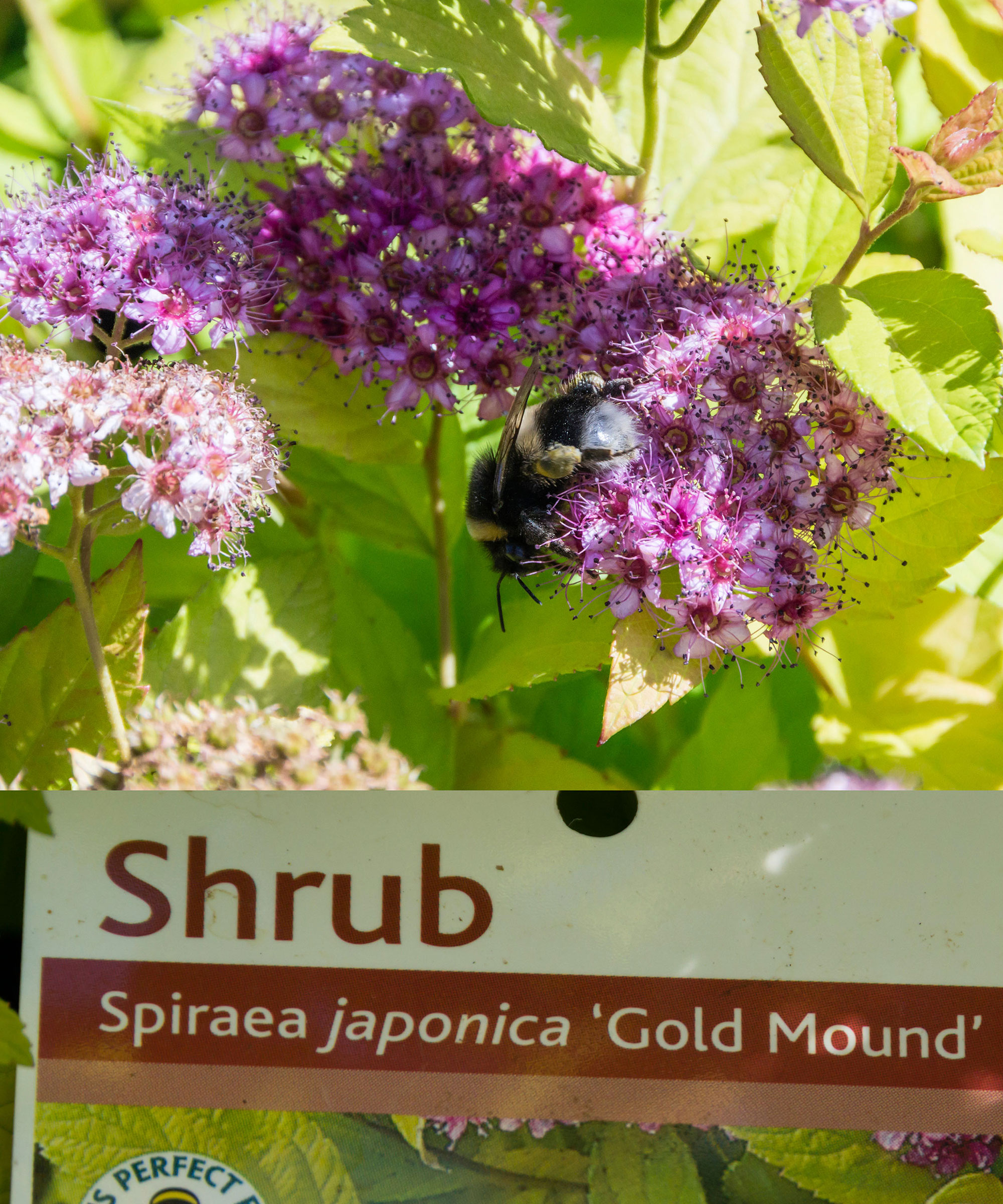
Where to buy spiraea in the US:
- Shop for spiraea plants at Amazon
- Shop for spiraea plants at Burpee
- Shop for spiraea plants at Garden Crossings
- Shop for spiraea plants at Lowe's
- Shop for spiraea plants at Nature Hills
- Shop for spiraea plants at Proven Winners
Where to buy spiraea in the UK:

Graham Rice is a garden writer who has won awards for his work online, and in books and magazines, on both sides of the Atlantic. He is a member of a number of Royal Horticultural Society committees and the recipient of the 2021 Garden Media Guild Lifetime Achievement Award.
